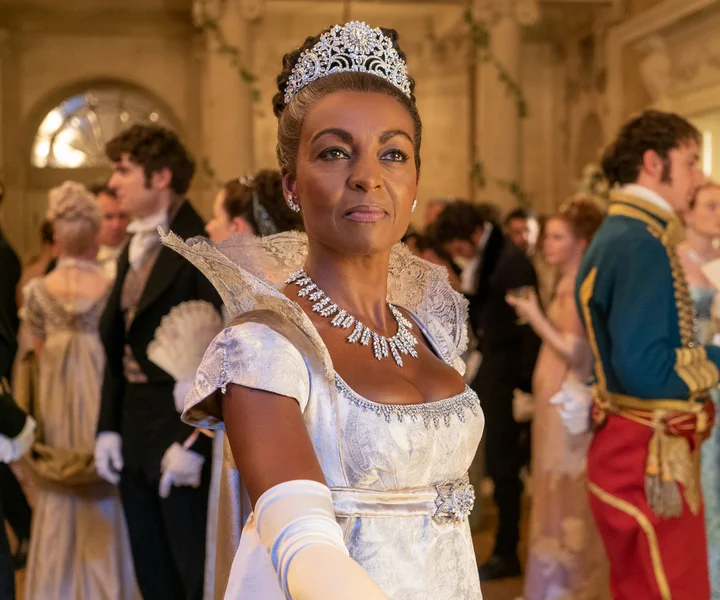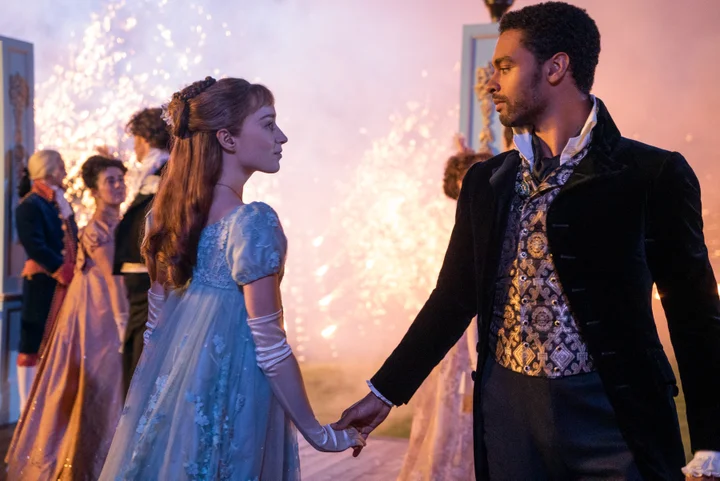At first glance, Netflix and Bridgerton’s choice to cast Black actors as characters written as white people in its source material (Regé-Jean Page plays romantic lead Simon, Duke of Hastings, who is white in the Bridgeton book series by Julia Quinn) harkens back to 1997’s Rodgers and Hammerstein’s Cinderella, in which the cast was made up of multiple different races whose ethnicities held no bearing on the plot, or on their familial ties. It gave a magical twist to the term “colorblind casting.” Cinderella existed in an alternate universe where Brandy could be a princess, and Victor Garber and Whoopi Goldberg could procreate to make a Filipino Prince Charming (Paolo Montalban). The Bridgerton books by Quinn (who has a sketchy track record when it comes to commenting on diversity) don’t tackle race at all. Plus, most 19th century period dramas are overwhelmingly white, so the Netflix series wanted to change that. But its creator and showrunner, Rhimes’ protege Chris Van Dusen, balked at the idea that the series exists in a fantastical colorblind realm in an interview with The New York Times.








